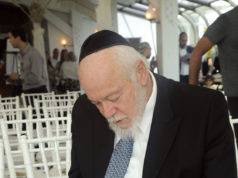 The Jews in Norway have a long history. The Jewish community in Norway is one of the country’s smallest ethnic and religious minorities. The largest synagogue is in Oslo, and a smaller synagogue in Trondheim is often claimed, erroneously, to be the world’s northernmost synagogue.
The Jews in Norway have a long history. The Jewish community in Norway is one of the country’s smallest ethnic and religious minorities. The largest synagogue is in Oslo, and a smaller synagogue in Trondheim is often claimed, erroneously, to be the world’s northernmost synagogue.
Norwegians converted from paganism to Christianity in the course of nearly 100 years, largely as a result of coercive measures. In the year 1000, all non-Christians were banned from Norway in an effort to institutionalize Christianity as the national religion. Although the ban was presumably targeted at pagan adherents, it also put Norway out of bounds for Jews for over 800 years.
Although there likely were Jewish merchants, sailors and others who entered Norway during the next several hundred years, no efforts were made to establish a Jewish community. Ruled by a series of Norwegian, Swedish, and Danish kings in combination with either Denmark or Sweden, public policy against non-Christians was in large part dictated by royal edict.

The first known mention of Jews in public documents relates to the admissibility of so-called “Portuguese Jews” (Sephardim) that had been expelled from Spain and Portugal in 1492 and 1497. Some of these were given special dispensation to enter Norway. Christian IV of Denmark-Norway gave Jews limited rights to travel within the kingdom, and in 1641, Ashkenazi Jews were given equivalent rights.
Christian V rescinded these privileges in 1687, specifically banning Jews from Norway, unless they were given a special dispensation. Jews found in the kingdom were jailed and expelled. This ban persisted for 150 years.
 In 1814, Norway signed its first constitution that included in its second paragraph a general ban against Jews and Jesuits entering the country. In principle, Portuguese Jews were exempt from this ban, but it appears that few applied for a letter of free passage. When Norway entered into the personal union of Sweden-Norway, the ban against Jews was upheld, though Sweden at that point had several Jewish communities.
In 1814, Norway signed its first constitution that included in its second paragraph a general ban against Jews and Jesuits entering the country. In principle, Portuguese Jews were exempt from this ban, but it appears that few applied for a letter of free passage. When Norway entered into the personal union of Sweden-Norway, the ban against Jews was upheld, though Sweden at that point had several Jewish communities.
In 1844, the Norwegian Ministry of Justice declared: “… it is assumed that the so-called Portuguese Jews are, regardless of the Constitution, entitled to dwell in this country, which is also, to [our] knowledge, what has hitherto been assumed.”
After tireless efforts by the poet Henrik Wergeland, the Norwegian parliament lifted the ban against Jews in 1851 and they were awarded religious rights on par with Christian “dissenters.”
In 1852, the first Jew landed in Norway to settle, but it wasn’t until 1892 that there were enough Jews to form a synagogue in Oslo.
The Jewish community grew slowly until World War II and peaked at about 1,800. During the Nazi rule under the Nazi occupation of Norway, nearly all Jews were either deported to death camps or fled to Sweden and beyond. The Jews fleeing to Sweden were most often given help by non-Jewish Norwegians, although a number of the border guides only agreed to assist after receiving high payments from the refugees. One of the biggest stains on the Norwegian WWII history is how the civilian Norwegian police (politiet) in many cases helped the German occupiers in the apprehension of those amongst the Jews who failed to escape in time. Records show that during the Holocaust, 758 Norwegian Jews were murdered by the Nazis—mostly in Auschwitz, and many of the refugees did not return. In 1946, there were 559 Jews in Norway.
Today
There are about 1,500 Jews in Norway today, of which the largest portion live in Oslo. There is a small community and synagogue in Trondheim, and others living around the country.
Norwegian Jews are well integrated into Norwegian society. Several former presidents of parliament, including Jo Benkow, are Jewish, as are other prominent Norwegians.
Anti-Semitism in Norway
Religious and ethnic tolerance is a strongly held value in Norwegian public life, though it may be safe to assume that residual anti-Semitism has persevered in private circles. To the extent that anti-Semitism can be associated with Nazism, the mainstream Norwegian political environment has strongly adopted a platform that rejects it.
However, widespread hostility to Israel for its policy towards Palestinians has, in the last few years, led to a blurring of the lines between anti-Zionism and anti-Semitism.
There have been several episodes of desecration of the synagogue in Oslo, and in July of 2006 the congregation issued an advisory warning not to wear kippot or other identifying items in public for fear of harassment or assault. In August of 2006, the issue of new anti-Semitism made a brief but intense appearance in the public eye when Jostein Gaarder published an op-ed in Aftenposten that stirred controversy over its content and literary form. On September 17th, 2006 the synagogue in Oslo was subjected to attack with an automatic weapon, only days after it was made public that the building had been the planned target for the Algerian terror group GSPC that had been plotting a bombing campaign in the Norwegian capital. The synagogue in Oslo is under continuous surveillance and protected by barriers.



